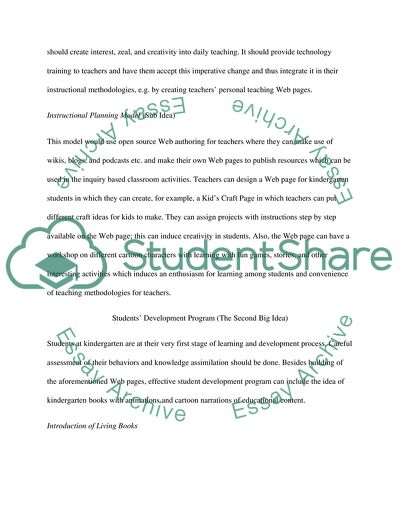
- Home
- Free Samples
- Premium Essays
- Editing Services
- Extra Tools
- Essay Writing Help
- About Us
- Studentshare
- Subjects
- Miscellaneous
- Technology Integration
Technology Integration - Essay Example

- Subject: Miscellaneous
- Type: Essay
- Level: Undergraduate
- Pages: 4 (1000 words)
- Downloads: 0
- Author: jastnyah
Extract of sample "Technology Integration"
Besides this the study highlights conceptual holes in the literature as well as other implications. Learning is defined as “the relatively permanent change in behavior brought about as a result of experience or practice.” (Huitt & Hummel, 1999) Learning is recognized when it is displayed by overt behavior. According to the behavioral learning theory, the way an organism or individual behaves overtly is due to some stimulus in the background. Hence this paper identifies the overt behavior or response by educators in schools over the need for technology integration in classrooms (stimulus).
Under the types of behavioral learning theories comes ‘Operant or Instrumental Conditioning Theory’ which studies the impact of consequences on behavior; it deals with voluntary behaviors. Using this theory, the paper discusses the impact of technology integration on effective student learning. Strong professional development programs are required for both teachers and administrators for the purpose of engaging and supporting them for big-picture uses of technology. The programs should be such as to create the kind of classrooms where all students are motivated to succeed.
It should create interest, zeal, and creativity into daily teaching. It should provide technology training to teachers and have them accept this imperative change and thus integrate it in their instructional methodologies, e.g. by creating teachers’ personal teaching Web pages. This model would use open source Web authoring for teachers where they can make use of wikis, blogs, and podcasts etc. and make their own Web pages to publish resources which can be used in the inquiry based classroom activities.
Teachers can design a Web page for kindergarten students in which they can create, for example, a Kid’s Craft Page in which teachers can put different craft ideas for kids to make. They can assign projects with instructions step by step available on the Web page; this can induce
...Download file to see next pages Read MoreCHECK THESE SAMPLES OF Technology Integration
The Technology Integration Planning Model Checklist
Depth of Technology Integration in Finance
Technology Integration and Constructivism Theory
Technology Integration to Business
Technology Integration in the High School Classroom
Information Technology Integration in the Construction Industry
Technology Integration in Education
Organizational Technology Integration Evaluation Model - AT&T, Inc

- TERMS & CONDITIONS
- PRIVACY POLICY
- COOKIES POLICY